BLOG
- Aparicio Vasquez, chapel master of Prince Henry, the Navigator
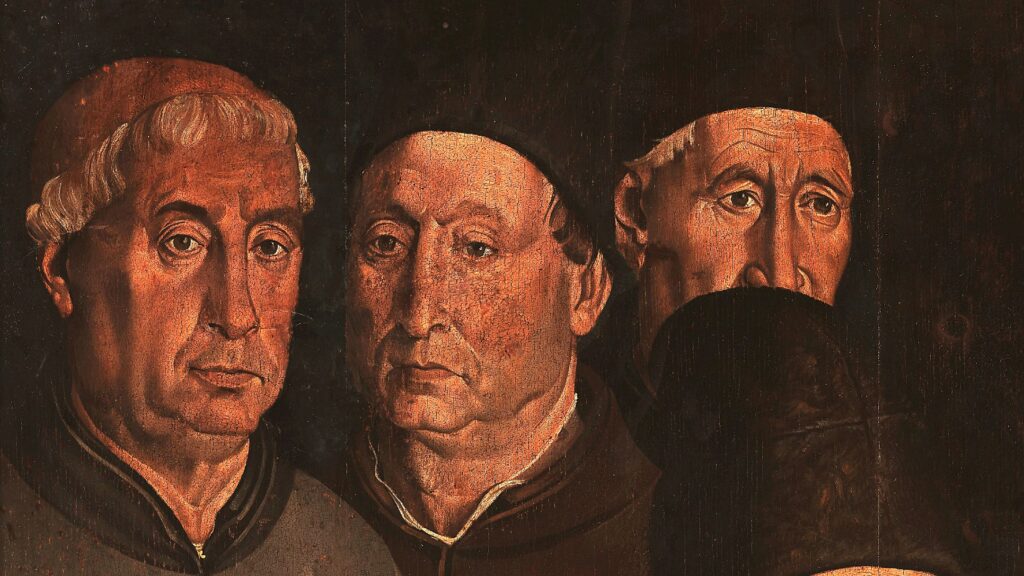 by Luís HenriquesAparicio Vasquez, chapel master of Prince Henry, the Navigator ❧ The fifteenth century is still less-known period in the Portuguese Music History, despite several recent efforts to cast some light in the music sources that have survived to this day, as well as some musical activity. There is no doubt …
by Luís HenriquesAparicio Vasquez, chapel master of Prince Henry, the Navigator ❧ The fifteenth century is still less-known period in the Portuguese Music History, despite several recent efforts to cast some light in the music sources that have survived to this day, as well as some musical activity. There is no doubt …Aparicio Vasquez, chapel master of Prince Henry, the Navigator Read More »
- Around two sixteenth-century doors in Évora and their musical context
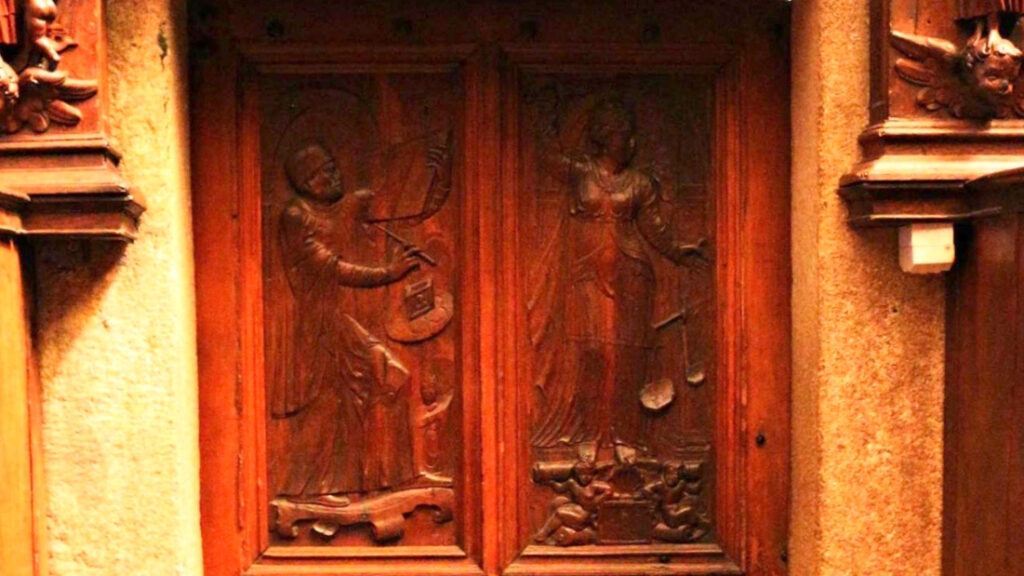 by Luís HenriquesAround two sixteenth-century doors in Évora and their musical context ❧ The door, an object of everyday life frequently forgotten, has, in certain contexts, some historical significance, sometimes not by itself, but by the individuals who used them. The present text does not intend to be a philosophical exercise on …
by Luís HenriquesAround two sixteenth-century doors in Évora and their musical context ❧ The door, an object of everyday life frequently forgotten, has, in certain contexts, some historical significance, sometimes not by itself, but by the individuals who used them. The present text does not intend to be a philosophical exercise on …Around two sixteenth-century doors in Évora and their musical context Read More »
- Some notes on the Spanish composer Hernando Franco’s activity in Portugal
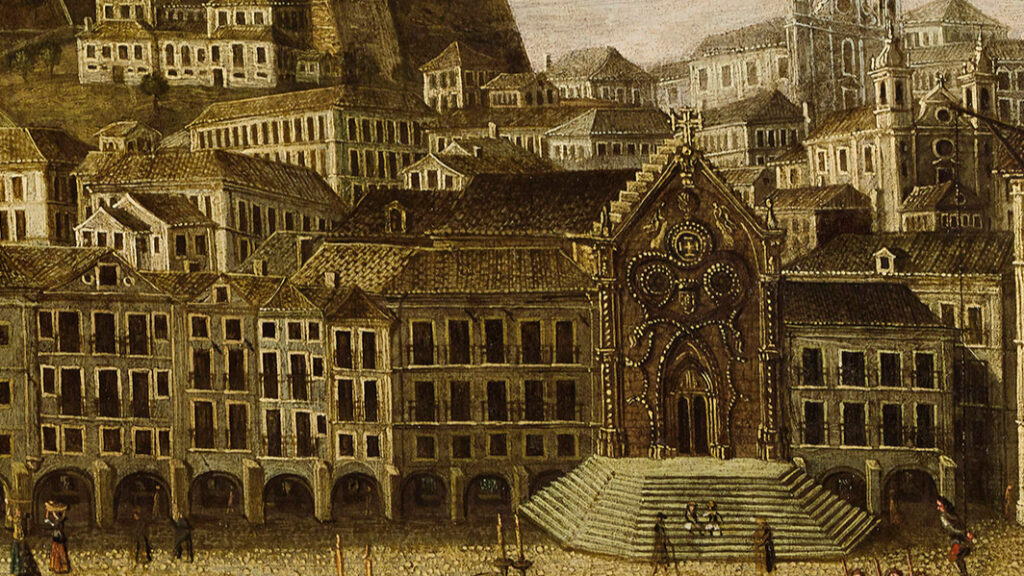 by Luís HenriquesSome notes on the Spanish composer Hernando Franco’s activity in Portugal ❧ Hernando Franco is nowadays a fairly well-known composer, mostly associated with the flourishing music activity at Mexico City Cathedral in the last decades of the sixteenth century. Most of what we known about him has come to us …
by Luís HenriquesSome notes on the Spanish composer Hernando Franco’s activity in Portugal ❧ Hernando Franco is nowadays a fairly well-known composer, mostly associated with the flourishing music activity at Mexico City Cathedral in the last decades of the sixteenth century. Most of what we known about him has come to us …Some notes on the Spanish composer Hernando Franco’s activity in Portugal Read More »
- The organ of the Church of Nossa Senhora da Guia in Angra do Heroísmo (Terceira Island): some notes
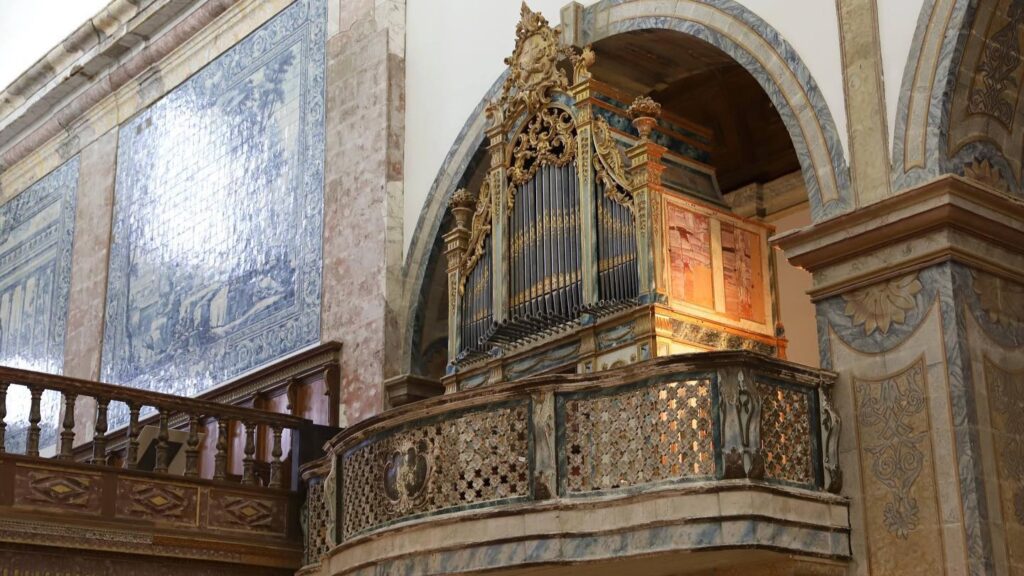 by Luís HenriquesThe organ of the Church of Nossa Senhora da Guia in Angra do Heroísmo (Terceira Island): some notes ❧ The Azores has a dense concentration of around sixty organs distributed by eight of the nine islands of the archipelago. These instruments were built during several time periods ranging from the …
by Luís HenriquesThe organ of the Church of Nossa Senhora da Guia in Angra do Heroísmo (Terceira Island): some notes ❧ The Azores has a dense concentration of around sixty organs distributed by eight of the nine islands of the archipelago. These instruments were built during several time periods ranging from the … - The choir lectern of Angra Cathedral (Terceira Island, Azores)
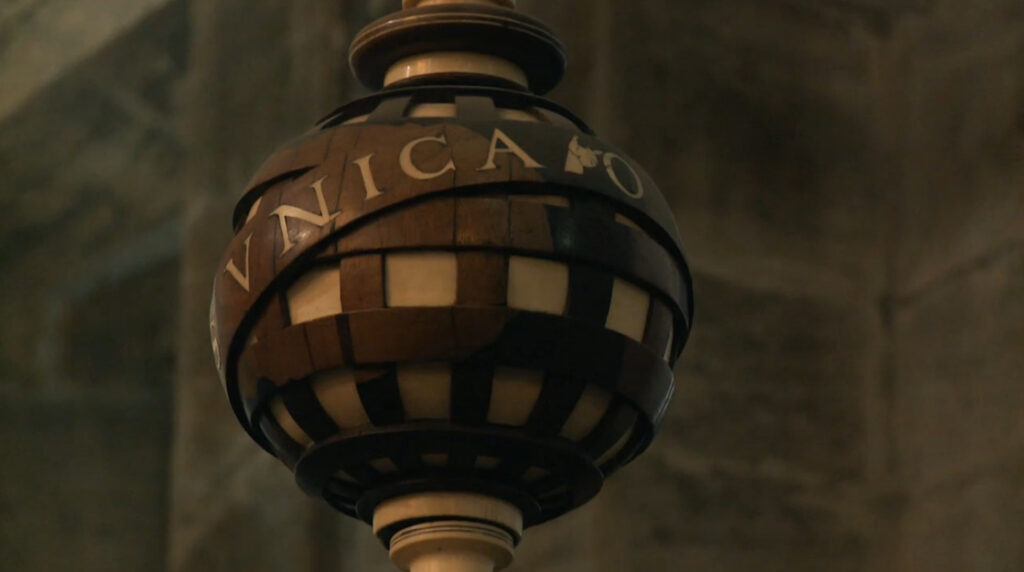 by Luís HenriquesThe choir lectern of Angra Cathedral (Terceira Island, Azores) ❧ Lecterns played an important part in the visual culture of musical practice in church choirs throughout the centuries. The stalls have been frequently regarded as the epitome of wood-carving carpentry and embellishment of the choirs but the lectern, usually its …
by Luís HenriquesThe choir lectern of Angra Cathedral (Terceira Island, Azores) ❧ Lecterns played an important part in the visual culture of musical practice in church choirs throughout the centuries. The stalls have been frequently regarded as the epitome of wood-carving carpentry and embellishment of the choirs but the lectern, usually its …The choir lectern of Angra Cathedral (Terceira Island, Azores) Read More »
- The Procession of Soledade in 1656 Évora
 by Luís HenriquesThe Procession of Soledade in 1656 Évora ❧ The so-called Good Friday procession organized by the Misericórdia of Évora in 1656, was in fact the procession of the Soledade. This procession seemed to be a strong Iberian devotion that commemorated the solitude of the Virgin Mary on Holy Saturday, and …
by Luís HenriquesThe Procession of Soledade in 1656 Évora ❧ The so-called Good Friday procession organized by the Misericórdia of Évora in 1656, was in fact the procession of the Soledade. This procession seemed to be a strong Iberian devotion that commemorated the solitude of the Virgin Mary on Holy Saturday, and … - The motet Ecce mulier Chananea by Fr. Manuel Cardoso
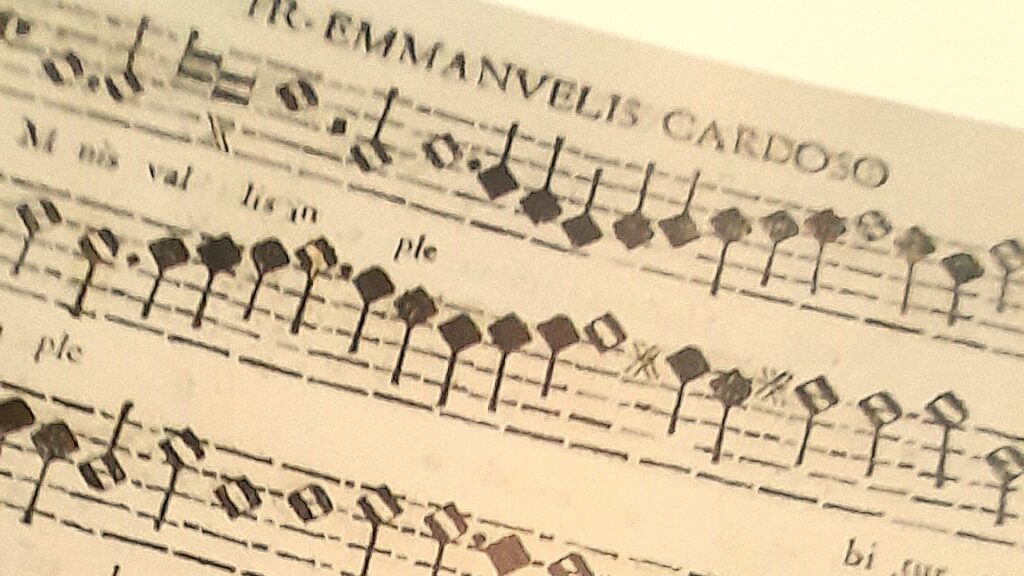 by Luís HenriquesThe motet Ecce mulier Chananea by Fr. Manuel Cardoso1 ❧ Manuel Cardoso was baptized on 11 December 1566, in the Parish Church of Fronteira, being most of his biographic details transmitted by the chronicler of the Carmelite Order, Fr. Manuel de Sá, who, in 1724, published the Memorias historicas… da …
by Luís HenriquesThe motet Ecce mulier Chananea by Fr. Manuel Cardoso1 ❧ Manuel Cardoso was baptized on 11 December 1566, in the Parish Church of Fronteira, being most of his biographic details transmitted by the chronicler of the Carmelite Order, Fr. Manuel de Sá, who, in 1724, published the Memorias historicas… da …The motet Ecce mulier Chananea by Fr. Manuel Cardoso Read More »
- The motet Mulier quae erat by Manuel Cardoso
 by Luís HenriquesThe motet Mulier quae erat by Manuel Cardoso ❧ Manuel Cardoso was born in the small Portuguese village of Fronteira (near the Spanish border), possibly in the second semester of the year of 1566, since he was baptized on 11 December of that year in the Parish Church of this …
by Luís HenriquesThe motet Mulier quae erat by Manuel Cardoso ❧ Manuel Cardoso was born in the small Portuguese village of Fronteira (near the Spanish border), possibly in the second semester of the year of 1566, since he was baptized on 11 December of that year in the Parish Church of this … - The motet Dominus dabit benignitatem by Ludovico Balbi
 by Luís HenriquesThe motet Dominus dabit benignitatem by Ludovico Balbi ❧ Both the sixteenth as the seventeenth centuries were times when an almost infinite number of musicians worked in European religious institutions at a higher level never seen after. I have frequently stated this in several conferences and talks followed by the …
by Luís HenriquesThe motet Dominus dabit benignitatem by Ludovico Balbi ❧ Both the sixteenth as the seventeenth centuries were times when an almost infinite number of musicians worked in European religious institutions at a higher level never seen after. I have frequently stated this in several conferences and talks followed by the …The motet Dominus dabit benignitatem by Ludovico Balbi Read More »
- Manuel Botelho, a musician in 17th-century Évora
 by Luís HenriquesManuel Botelho, a musician in 17th-century Évora ❧ Most of what we read regarding the musical activity in Évora Cathedral from the sixteenth to the eighteenth centuries is frequently focused on the careers and compositions of the institution’s most distinguished chapel masters. Indeed, this happens in many cases as a …
by Luís HenriquesManuel Botelho, a musician in 17th-century Évora ❧ Most of what we read regarding the musical activity in Évora Cathedral from the sixteenth to the eighteenth centuries is frequently focused on the careers and compositions of the institution’s most distinguished chapel masters. Indeed, this happens in many cases as a …Manuel Botelho, a musician in 17th-century Évora Read More »
- The 17th century Portuguese composer Henrique de Faria
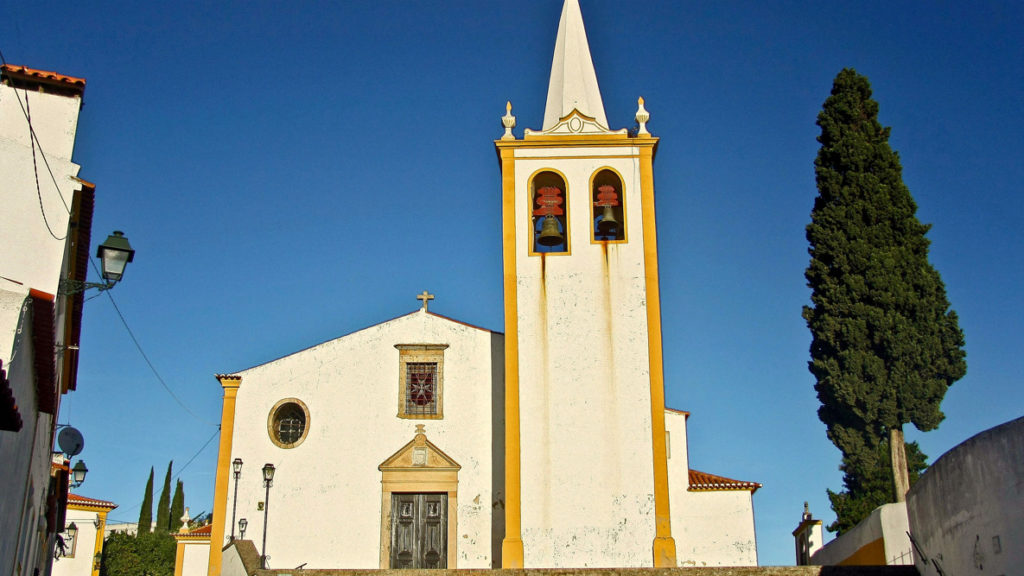 by Luís HenriquesThe 17th century Portuguese composer Henrique de Faria ❧ As is the case with many Portuguese composers of the sixteenth and seventeenth centuries, those whose musical careers were mostly developed in ecclesiastical institutions of lesser importance, when compared to the great cathedrals and monastic and conventual houses, are frequently almost …
by Luís HenriquesThe 17th century Portuguese composer Henrique de Faria ❧ As is the case with many Portuguese composers of the sixteenth and seventeenth centuries, those whose musical careers were mostly developed in ecclesiastical institutions of lesser importance, when compared to the great cathedrals and monastic and conventual houses, are frequently almost …The 17th century Portuguese composer Henrique de Faria Read More »
- The Francisco Valls’s Missa Scala Aretina controversy
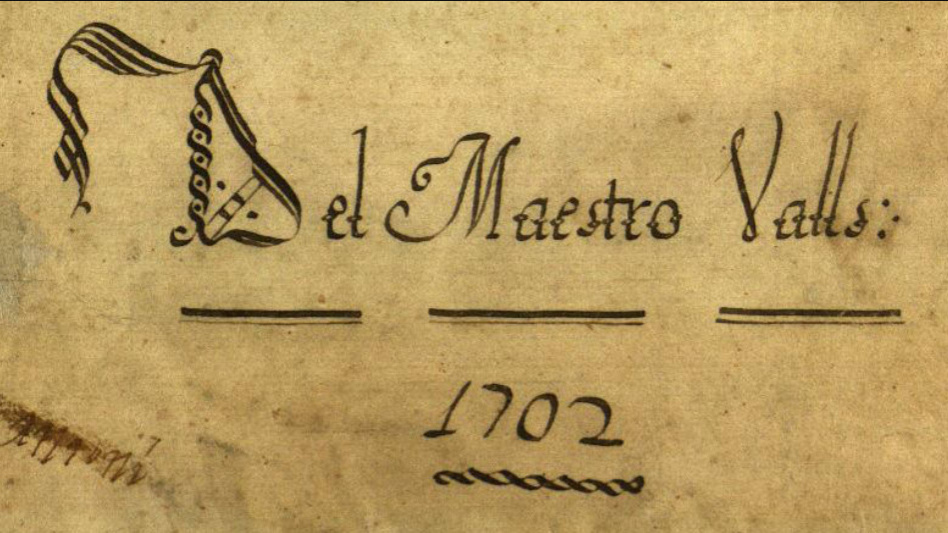 by Luís HenriquesThe Francisco Valls’s Missa Scala Aretina controversy ❧ Among the recent readings on Iberian music in the last decades of the seventeenth and early decades of the eighteenth century, one interesting aspect called my attention which is centred on the controversy around the Catalan composer Francisco Valls’s Missa Scala Aretina …
by Luís HenriquesThe Francisco Valls’s Missa Scala Aretina controversy ❧ Among the recent readings on Iberian music in the last decades of the seventeenth and early decades of the eighteenth century, one interesting aspect called my attention which is centred on the controversy around the Catalan composer Francisco Valls’s Missa Scala Aretina …The Francisco Valls’s Missa Scala Aretina controversy Read More »
- A procession imploring for rain in seventeenth century Évora
 by Luís HenriquesA procession imploring for rain in seventeenth century Évora ❧ Processions imploring for rain (ad petendam pluviam) are a constant occurrence in the Early Modern World. During the extended periods of extreme drought Man turned to the divine forces to ensure his subsistence directly related to the cultivation of the …
by Luís HenriquesA procession imploring for rain in seventeenth century Évora ❧ Processions imploring for rain (ad petendam pluviam) are a constant occurrence in the Early Modern World. During the extended periods of extreme drought Man turned to the divine forces to ensure his subsistence directly related to the cultivation of the …A procession imploring for rain in seventeenth century Évora Read More »
- The motet Cantantibus organis by Giovanni P. da Palestrina
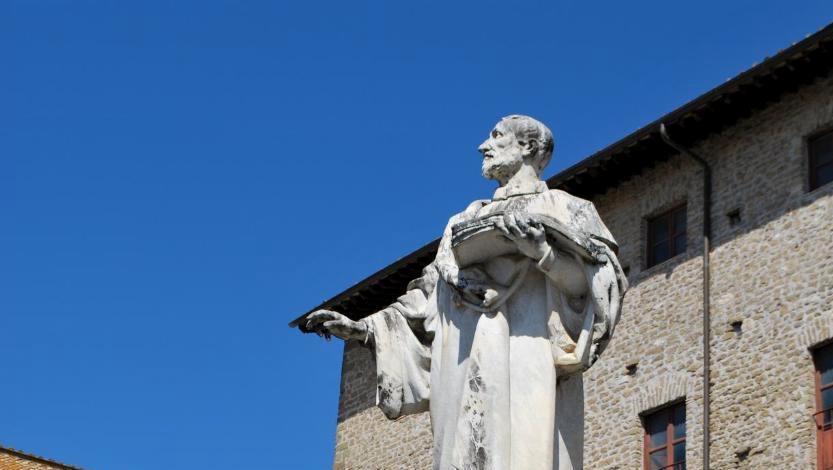 by Luís HenriquesThe motet Cantantibus organis by Giovanni P. da Palestrina ❧ So much has been written about Giovanni Pierluigi da Palestrina’s compositions that it would be fruitless to follow the same approach to his music as many accomplished scholars have done so. So, in this text I’ll offer a personal perspective …
by Luís HenriquesThe motet Cantantibus organis by Giovanni P. da Palestrina ❧ So much has been written about Giovanni Pierluigi da Palestrina’s compositions that it would be fruitless to follow the same approach to his music as many accomplished scholars have done so. So, in this text I’ll offer a personal perspective …The motet Cantantibus organis by Giovanni P. da Palestrina Read More »
- The motet Assumpta est Maria by Giovanni P. da Palestrina
 by Canto MensurableThe motet Assumpta est Maria by Giovanni P. da Palestrina ❧ No Renaissance composer and few later ones have been as proficient as Palestrina at writing positive, outward-going, major-key music, and in this context Assumpta est Maria represents one of the most important works of the period. With these words …
by Canto MensurableThe motet Assumpta est Maria by Giovanni P. da Palestrina ❧ No Renaissance composer and few later ones have been as proficient as Palestrina at writing positive, outward-going, major-key music, and in this context Assumpta est Maria represents one of the most important works of the period. With these words …The motet Assumpta est Maria by Giovanni P. da Palestrina Read More »
- The Missa Salvatorem expectamus by Gregorio Allegri
 by Canto MensurableThe Missa Salvatorem expectamus by Gregorio Allegri ❧ The composer Gregorio Allegri is best known for his Miserere and all the tradition around the Papal chapel during the seventeenth and eighteenth centuries. Besides this wider-known composition, it is not an easy task to list other works by Allegri. The composer …
by Canto MensurableThe Missa Salvatorem expectamus by Gregorio Allegri ❧ The composer Gregorio Allegri is best known for his Miserere and all the tradition around the Papal chapel during the seventeenth and eighteenth centuries. Besides this wider-known composition, it is not an easy task to list other works by Allegri. The composer …The Missa Salvatorem expectamus by Gregorio Allegri Read More »
- Artists living at Porta Nova of Évora in the 16th century
 by Luís HenriquesAs many early modern cities did, so did Évora have its areas where certain trades were concentrated, arranged throughout specific streets our squares. As we still see today in many of Évora’s buildings the ground floor of most of them in the nowadays historical centre streets were shops where goods …
by Luís HenriquesAs many early modern cities did, so did Évora have its areas where certain trades were concentrated, arranged throughout specific streets our squares. As we still see today in many of Évora’s buildings the ground floor of most of them in the nowadays historical centre streets were shops where goods …Artists living at Porta Nova of Évora in the 16th century Read More »
- Organ activity in the Church of Santo Antão, Évora, in the 1570s
 by Luís HenriquesThe Church of Santo Antão (dedicated to St Anthony, Abbot) was one of the main construction projects of the Cardinal D. Henrique during his government as Archbishop of Évora. During Medieval times it is referenced as the Church of Santo Antoninho in the city’s main square, annexed to the hospital …
by Luís HenriquesThe Church of Santo Antão (dedicated to St Anthony, Abbot) was one of the main construction projects of the Cardinal D. Henrique during his government as Archbishop of Évora. During Medieval times it is referenced as the Church of Santo Antoninho in the city’s main square, annexed to the hospital …Organ activity in the Church of Santo Antão, Évora, in the 1570s Read More »
- A visit to the Convent of Calvário in Évora by King Philip III
 by Luís HenriquesThe entries and visits of kings to the cities were always moments of grandeur, consisting in the perfect moments for the commission of artworks as well as social gatherings and much activity among the ruling classes of the cities and villages visited. To write about this would be too extensive …
by Luís HenriquesThe entries and visits of kings to the cities were always moments of grandeur, consisting in the perfect moments for the commission of artworks as well as social gatherings and much activity among the ruling classes of the cities and villages visited. To write about this would be too extensive …A visit to the Convent of Calvário in Évora by King Philip III Read More »
- Francisco Velez, a musician in sixteenth century Évora
 by Luís HenriquesTo write about musicians, composers, or even chapel masters in Évora during the sixteenth century frequently represents a challenge, to say the least, due to the scarcity of sources and accounts regarding their professional careers or their own biographies. The case of the singer, composer, and master Francisco Velez is …
by Luís HenriquesTo write about musicians, composers, or even chapel masters in Évora during the sixteenth century frequently represents a challenge, to say the least, due to the scarcity of sources and accounts regarding their professional careers or their own biographies. The case of the singer, composer, and master Francisco Velez is …Francisco Velez, a musician in sixteenth century Évora Read More »
- Two mid-16th-century Cecilian parody masses
 by Luís HenriquesWhen speaking of Cecilian music, one generally has the idea of the nineteenth-century movement, mostly centred in Germany, that pushed a reformation of Catholic church music, aiming to restore a more traditional religious feeling and the authority of the church in regard to the sacred music repertoire. This movement of …
by Luís HenriquesWhen speaking of Cecilian music, one generally has the idea of the nineteenth-century movement, mostly centred in Germany, that pushed a reformation of Catholic church music, aiming to restore a more traditional religious feeling and the authority of the church in regard to the sacred music repertoire. This movement of … - The motet Ad te levavi animam meam by Palestrina
 by Luís HenriquesGiovanni Pierluigi da Palestrina died on 2 February 1594. Several months earlier, a collection of 68 motets was published. Although it appeared at the end of 1593 it is generally thought that these motets were composed over a period of years. Many have interpreted this publication as a summation of …
by Luís HenriquesGiovanni Pierluigi da Palestrina died on 2 February 1594. Several months earlier, a collection of 68 motets was published. Although it appeared at the end of 1593 it is generally thought that these motets were composed over a period of years. Many have interpreted this publication as a summation of …The motet Ad te levavi animam meam by Palestrina Read More »
- A biographical note on the composer António de Oliveira
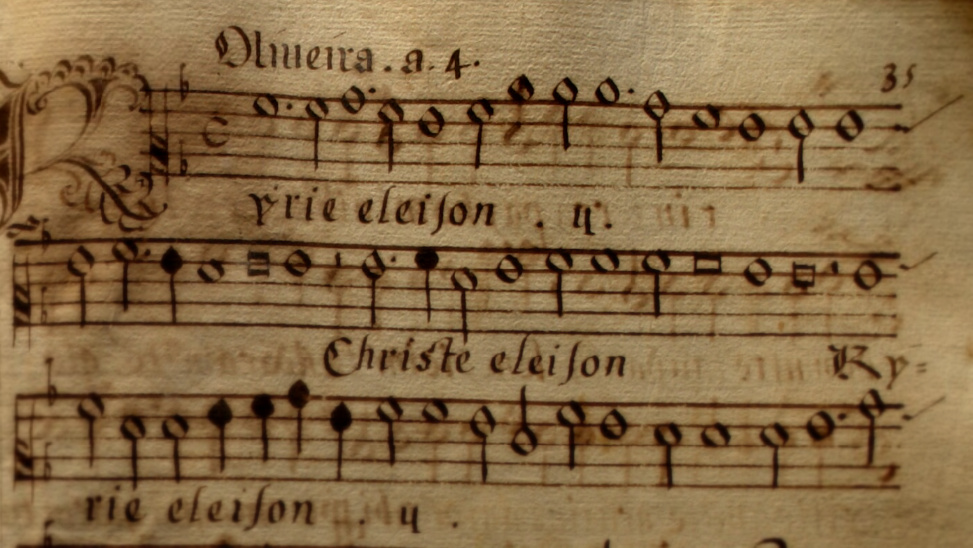 by Luís Henriques❧ Not much is known about the Portuguese composer António de Oliveira, besides that he was active in the last decades of the sixteenth century. Much of what is known about him comes from the short entry of Diogo Barbosa Machado’s Bibliotheca Lusitana and must be interpreted as accurate as …
by Luís Henriques❧ Not much is known about the Portuguese composer António de Oliveira, besides that he was active in the last decades of the sixteenth century. Much of what is known about him comes from the short entry of Diogo Barbosa Machado’s Bibliotheca Lusitana and must be interpreted as accurate as …A biographical note on the composer António de Oliveira Read More »
- The Medieval Soundscape of Évora from a 17th-Century Perspective
 by Luís HenriquesMost of the published studies about the history of music in the Portuguese city of Évora have begin chronologically in the first decades of the sixteenth century onwards. This period corresponded to the activity of the Spanish chapel master Mateus d’Aranda at Évora Cathedral. The successors of Aranda both as …
by Luís HenriquesMost of the published studies about the history of music in the Portuguese city of Évora have begin chronologically in the first decades of the sixteenth century onwards. This period corresponded to the activity of the Spanish chapel master Mateus d’Aranda at Évora Cathedral. The successors of Aranda both as …The Medieval Soundscape of Évora from a 17th-Century Perspective Read More »
- Pueri Hebraeorum vestimenta by Simão dos Anjos
 by Luís HenriquesThe city of Évora, Alentejo, Portugal, is known for its musical history regarding the great Portuguese masters of polyphony of the first half of the seventeenth century. Names like Fr. Manuel Cardoso, Duarte Lobo, Filipe de Magalhães are known throughout the world as leading figures with biographical and professional relations …
by Luís HenriquesThe city of Évora, Alentejo, Portugal, is known for its musical history regarding the great Portuguese masters of polyphony of the first half of the seventeenth century. Names like Fr. Manuel Cardoso, Duarte Lobo, Filipe de Magalhães are known throughout the world as leading figures with biographical and professional relations … - The Magnificat Quarti Toni by Duarte Lobo
 by Luís HenriquesIn 1626 the Portuguese theorist Antonio Fernandes dedicated his Arte de Musica to his former master Duarte Lobo praising him as one of the most illustrious Portuguese masters. Duarte Lobo is included in the trio of Portuguese composers (the other two being Fr. Manuel Cardoso and Filipe de Magalhães) with …
by Luís HenriquesIn 1626 the Portuguese theorist Antonio Fernandes dedicated his Arte de Musica to his former master Duarte Lobo praising him as one of the most illustrious Portuguese masters. Duarte Lobo is included in the trio of Portuguese composers (the other two being Fr. Manuel Cardoso and Filipe de Magalhães) with … - The motet Ave gratia plena by Cornelis Verdonck
 by Luís HenriquesFlemish composer and singer Cornelis Verdonck was born in Turnhout sometime during the year 1563 and died in Antwerp on 5 July 1625. He was a choirboy at Antwerp Cathedral and in 1572 was enrolled as a singer at the court of Felipe II of Spain being colleague to other …
by Luís HenriquesFlemish composer and singer Cornelis Verdonck was born in Turnhout sometime during the year 1563 and died in Antwerp on 5 July 1625. He was a choirboy at Antwerp Cathedral and in 1572 was enrolled as a singer at the court of Felipe II of Spain being colleague to other … - The villancico “Quem vio hum menino” by António Marques Lésbio
 by Luís HenriquesMost of the posts on the Cantum Mensurable blog have focused on sacred music, in particular Latin polyphony. The corpus of Portuguese music of the sixteenth and seventeenth centuries is rich in para-liturgical and religious thematic music being the villancico in the centre of this interesting repertory. In the case …
by Luís HenriquesMost of the posts on the Cantum Mensurable blog have focused on sacred music, in particular Latin polyphony. The corpus of Portuguese music of the sixteenth and seventeenth centuries is rich in para-liturgical and religious thematic music being the villancico in the centre of this interesting repertory. In the case …The villancico “Quem vio hum menino” by António Marques Lésbio Read More »
- The motet O magnum mysterium by Cristóbal de Morales
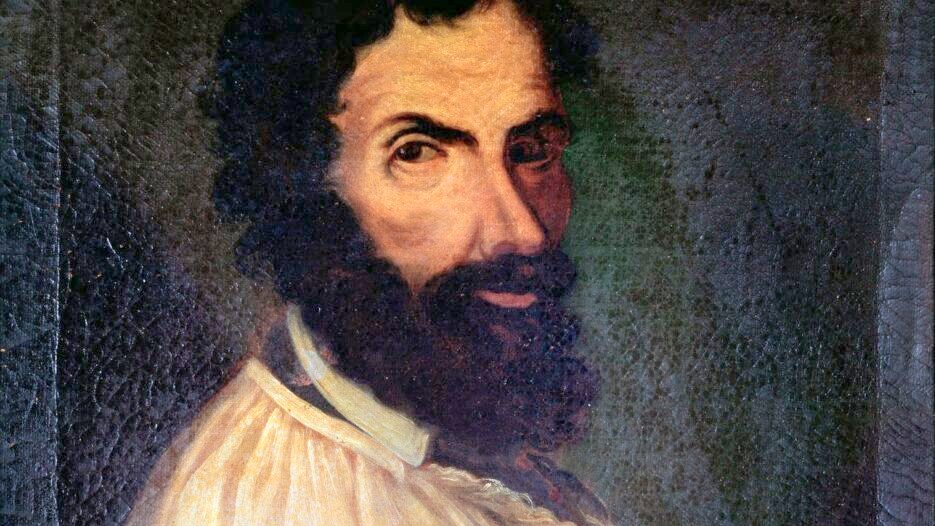 by Luís HenriquesMany sixteenth and seventeenth-century composers have set the text O Magnum mysterium with wonderful polyphonic results, such as Willaert, Gabrieli, Palestrina, Victoria, and, Morales only to name a few. In Portugal during this period we find at least three settings of this text – all as responsories – by Pedro …
by Luís HenriquesMany sixteenth and seventeenth-century composers have set the text O Magnum mysterium with wonderful polyphonic results, such as Willaert, Gabrieli, Palestrina, Victoria, and, Morales only to name a few. In Portugal during this period we find at least three settings of this text – all as responsories – by Pedro …The motet O magnum mysterium by Cristóbal de Morales Read More »
- Two Magnificat Settings by Francesco Soriano
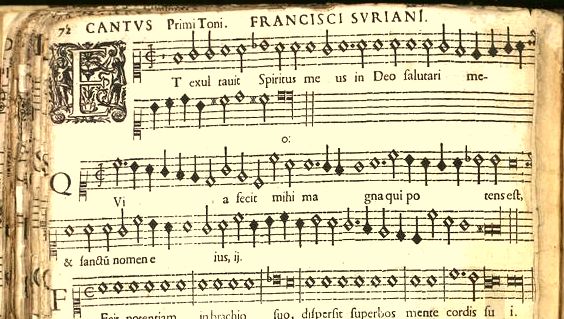 by Luís HenriquesFrancesco Soriano is one of the cases where composers of the same generation become lesser known than the popular composers of the time, and the last decades of the sixteenth century were a great time to be forgotten from the mainstream Music History books. It was the case in Italy …
by Luís HenriquesFrancesco Soriano is one of the cases where composers of the same generation become lesser known than the popular composers of the time, and the last decades of the sixteenth century were a great time to be forgotten from the mainstream Music History books. It was the case in Italy … - Alma Redemptoris Mater by Giovanni Pierluigi da Palestrina
 by Luís HenriquesPalestrina is most certainly the sixteenth-century composer who printed almost all of his music production. The fact that his career developed in Rome, centre of the Catholic world and of important figures of the Church, contributed considerable for the numerous books of masses, motets, hymns, lamentations among many other works …
by Luís HenriquesPalestrina is most certainly the sixteenth-century composer who printed almost all of his music production. The fact that his career developed in Rome, centre of the Catholic world and of important figures of the Church, contributed considerable for the numerous books of masses, motets, hymns, lamentations among many other works …Alma Redemptoris Mater by Giovanni Pierluigi da Palestrina Read More »
- In manus tuas attributed to Tomás Luis de Victoria
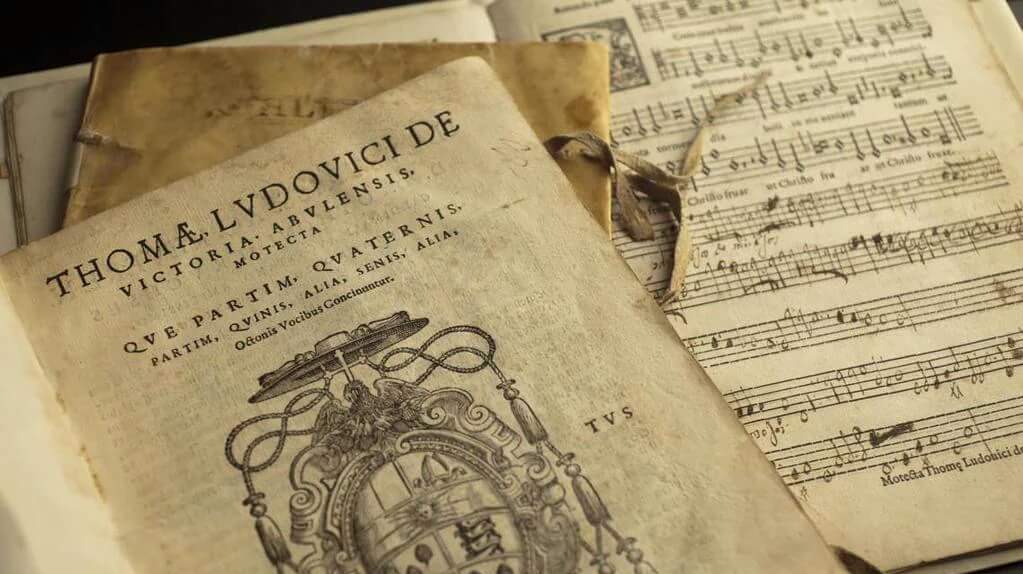 by Luís HenriquesI have always been a fan of small-scale polyphonic works. In the case of Portuguese sixteenth and seventeenth-century polyphony, I have always included brief works, mostly the Jesu Redemptor settings, in concert programmes and recordings. These works are often forgotten from concert programmes due to their small scale length. One of these …
by Luís HenriquesI have always been a fan of small-scale polyphonic works. In the case of Portuguese sixteenth and seventeenth-century polyphony, I have always included brief works, mostly the Jesu Redemptor settings, in concert programmes and recordings. These works are often forgotten from concert programmes due to their small scale length. One of these …In manus tuas attributed to Tomás Luis de Victoria Read More »
15th century 16th Century 17th Century 18th Century Advent Angra do Heroísmo antiphon artists Azores biography blog chapel master Christmas collegiates composer convents Flanders France Franciscans Holy Week instrumental music instruments Italy Lent Magnificat Manuel Cardoso Mass Middle Ages motet musicians Music Theory organs Palestrina plainchant polychoral Polyphony Portugal Procession Royal Chapel royal entries Sacred music Santo Antão Spain Villancico Évora
